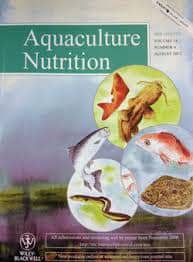Increased parasite resistance of greater amberjack (Seriola dumerili Risso 1810) juveniles fed a cMOS supplemented diet is associated with upregulation of a discrete set of immune genes in mucosal tissues

Abstract
The main objective of this study was to determine the effect of two forms of mannanoligosaccharides (MOS: Bio-Mos® and cMOS: Actigen®, Alltech Inc, USA) and their combination on greater amberjack (Seriola dumerili) growth performance and feed efficiency, immune parameters and resistance against ectoparasite (Neobenedenia girellae) infection.
Fish were fed for 90 days with 5 g kg−1 MOS, 2 g kg−1 cMOS or a combination of both prebiotics, in a Seriola commercial base diet (Skretting, Norway). At the end of the feeding period, no differences were found in growth performance or feed efficiency. Inclusion of MOS also had no effect on lysozyme activity in skin mucus and serum, but the supplementation of diets with cMOS induced a significant increase of serum bactericidal activity. Dietary cMOS also reduced significantly greater amberjack skin parasite levels, parasite total length and the number of parasites detected per unit of fish surface following a cohabitation challenge with N. girellae, whereas no effect of MOS was detected on these parameters.
Of 17 immune genes studied cMOS dietary inclusion up-regulated hepcidin, defensin, Mx protein, interferon-γ (IFNγ), mucin-2 (MUC-2), interleukin-1β (IL-1B), IL-10 and immunoglobulin-T (IgT) gene expression in gills and/or skin. MOS supplementation had a larger impact on spleen and head kidney gene expression, where piscidin, defensin, iNOS, Mx protein, interferons, IL-1β, IL-10, IL-17 and IL-22 were all upregulated. In posterior gut dietary MOS and cMOS both induced IL-10, IgM and IgT, but with MOS also increasing piscidin, MUC-2, and IL-1β whilst cMOS induced hepcidin, defensin and IFNγ.
In general, the combination of MOS and cMOS resulted in fewer or lower increases in all tissues, possibly due to an overstimulation effect. The utilization of cMOS at the dose used here has clear benefits on parasite resistance in greater amberjack, linked to upregulation of a discrete set of immune genes in mucosal tissues.

